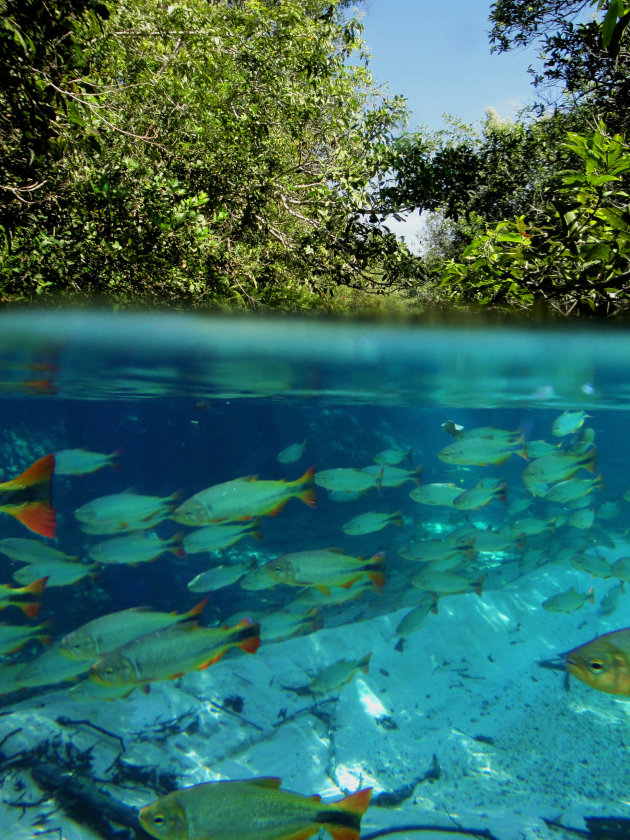Wildlife Photography Tips In Pantanal
Share
The Pantanal, a vast tropical wetland in Brazil, is a paradise for wildlife photographers. With its rich biodiversity, stunning landscapes, and unique ecosystems, it offers countless opportunities to capture breathtaking images of nature. Whether you're a seasoned photographer or just starting, this guide will provide you with essential tips to enhance your wildlife photography experience in the Pantanal.
Understanding the Pantanal Ecosystem
The Pantanal is one of the largest tropical wetlands in the world, spanning over 150,000 square kilometers. It is home to an incredible variety of wildlife, including jaguars, capybaras, caimans, and hundreds of bird species. Understanding the ecosystem is crucial for wildlife photography, as it helps you know where to find animals and how to approach them without disturbing their natural behavior.
Key Wildlife Species to Photograph
- Jaguars: The elusive jaguar is one of the most sought-after subjects for photographers. They are often spotted near water bodies, especially during the dry season.
- Birds: The Pantanal is a birdwatcher's paradise, with species like the hyacinth macaw, jabiru stork, and the giant river otter.
- Reptiles: Caimans and anacondas are common sights, particularly in the wetlands and rivers.
Best Time to Visit
The best time to visit the Pantanal for wildlife photography is during the dry season, which typically runs from May to September. During this period, animals congregate around water sources, making them easier to spot and photograph. The weather is also more favorable, with less rain and clearer skies.
Weather Considerations
- Dry Season (May to September): Ideal for wildlife sightings, with temperatures ranging from 20°C to 30°C (68°F to 86°F).
- Wet Season (October to April): While the landscape is lush and vibrant, wildlife can be harder to find as animals disperse across the flooded plains.
Essential Photography Gear
Having the right gear is crucial for capturing stunning wildlife photographs. Here are some essential items to consider:
- Camera: A DSLR or mirrorless camera with a fast autofocus system is recommended.
- Lenses: A telephoto lens (200mm or longer) is ideal for capturing distant wildlife without disturbing them.
- Tripod: A sturdy tripod helps stabilize your camera, especially in low light conditions.
- Waterproof Bag: Protect your gear from the elements, as the Pantanal can be humid and wet.
Techniques for Capturing Wildlife
Patience and Observation
Wildlife photography requires patience. Spend time observing animal behavior and wait for the right moment to capture that perfect shot. Be prepared to sit quietly for extended periods, as this increases your chances of getting close to your subjects.
Use Natural Light
Natural light is your best friend in wildlife photography. Early morning and late afternoon provide the softest light, enhancing colors and reducing harsh shadows. Avoid shooting in the middle of the day when the sun is high, as this can lead to overexposed images.
Composition Matters
Consider the rule of thirds when framing your shots. Place your subject off-center to create a more dynamic image. Look for interesting backgrounds that complement your subject, and be mindful of distractions that could detract from your photograph.
Ethical Wildlife Photography
Respect for wildlife and their habitats is paramount. Here are some ethical guidelines to follow:
- Keep Your Distance: Use a telephoto lens to avoid getting too close to animals. This minimizes stress on the wildlife and ensures their natural behavior is preserved.
- Do Not Disturb: Avoid making loud noises or sudden movements that could scare animals away.
- Leave No Trace: Follow the principles of Leave No Trace to protect the environment and wildlife.
Post-Processing Tips
After capturing your images, post-processing can enhance their quality. Here are some tips:
- Adjust Exposure and Contrast: Fine-tune the exposure and contrast to bring out details in your images.
- Crop for Composition: Don’t hesitate to crop your images to improve composition and focus on your subject.
- Sharpen and Reduce Noise: Use editing software to sharpen your images and reduce noise, especially in low-light shots.
Recommended Locations for Wildlife Photography in Pantanal
- Transpantaneira Highway: This road is famous for wildlife sightings, including capybaras, caimans, and a variety of birds.
- Porto Jofre: Known for jaguar sightings, especially along the Cuiabá River.
- Pousada Piuval: A great base for exploring the northern Pantanal, offering opportunities to photograph diverse wildlife.
Conclusion
Capturing the beauty of wildlife in the Pantanal is an unforgettable experience. With the right preparation, patience, and respect for nature, you can create stunning images that tell the story of this incredible ecosystem. Whether you're photographing jaguars or colorful birds, each moment spent in the Pantanal will leave a lasting impression.
For those ready to embark on this photographic adventure, consider booking your accommodations and flights now.
Remember, the Pantanal is waiting for you, and your next great wildlife photograph is just a click away!




